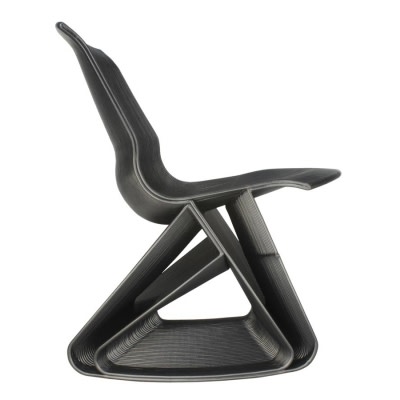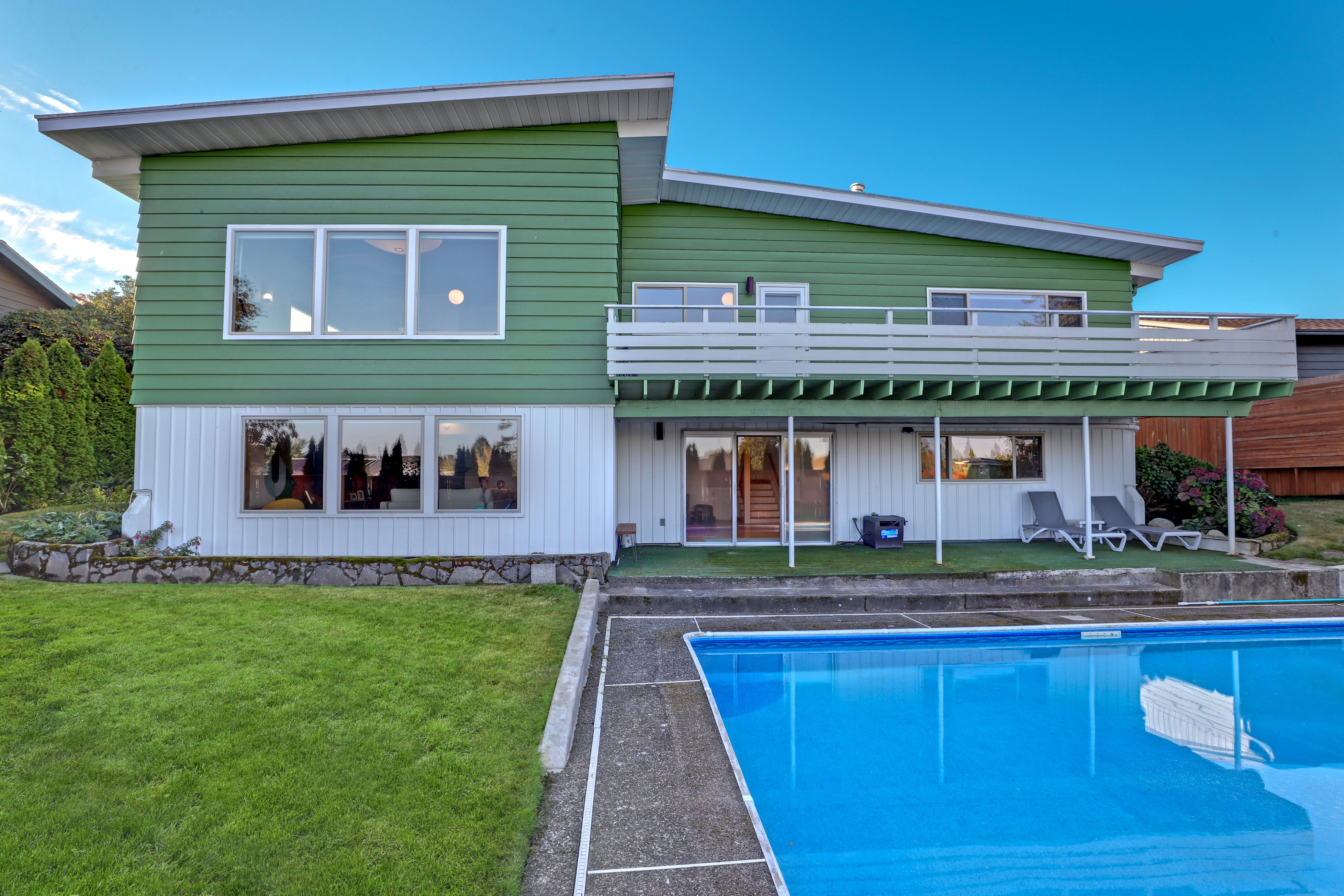The Print-it-then-Sit-in-it-Chair

Not your grandfather’s rocker, this one is made by Dirk Vander Kooij from an “endless” strand of recycled plastic extruded from the arm of a repurposed robot. It comes in bright colors too.
Somewhere in a country far far away (Holland, actually), in a time not so very long ago (2010), a young design student made a robot which made a chair which was made of melted recycled refrigerator interiors. No, this is not the plot of a children’s book; this is a true story.
The student was Dirk Vander Kooij, and now he is the maker – with the help of his repurposed industrial robot pal – of the Endless Chair furniture line at his company in Eindhoven, Holland.
The concept boggles the mind, and yet it is reality, not concept. Vander Kooij started his furniture production company last year. He sells the “Flow” and “Endless” lines of chairs in dining, rocking, and even children’s versions, at his online shop and at retail locations in Holland.
As a design student, Vander Kooij had graduated from Wood and Furniture College in Amsterdam when he decided to pursue further study at the Design Academy in Eindhoven. There he got interested in plastics (perhaps he’d watched The Graduate?) and was inspired by the “old” 3D printers he’d seen.
3D printers themselves take some twisting to get one’s mind around. To those of us who grew up with ancient technologies like telephones that plugged into a wall, 8-track or cassette tape recorders, Xerox machines or even typewriters and carbon paper… well, “printing” implies something flat. But 3D printers are becoming more and more available to “print” objects.
ADX, the open-to-the-public fabrication studio in Southeast Portland, has a 3D printer (along with a lot of other interesting machines for making things, like a laser cutter and a CNC router). Like any old school computer printer, a “head” moves over a surface and “prints” a computer-directed image.
But with 3D printers, the surface is not flat – or rather, it starts flat and the printer head moves not just horizontally but vertically. It “prints” what is not just a two dimensional image but a three dimensional object. Instead of ink that dries flat, the material being shot out of the printer head is a plastic that creates a volume.
Vander Kooij’s new robot-driven fabrication method is an additive process. In a sense it’s the opposite of the traditional way of making a plastic chair, whereby you’d first create a mold into which to pour the plastic, then pull away the mold to reveal the chair. The “printer” process allows every chair to become a different prototype. Rather than having to make a new mold, the designer simply tweaks the computer program the robot follows in making the next chair.
Vander Kooij’s website includes a great two-minute video showing the industrial robot he programmed to make the Endless chairs. It’s worth watching to get your head around 3D printing, and to marvel at how quickly the chair gets “drawn” into real, sit-able shape.




